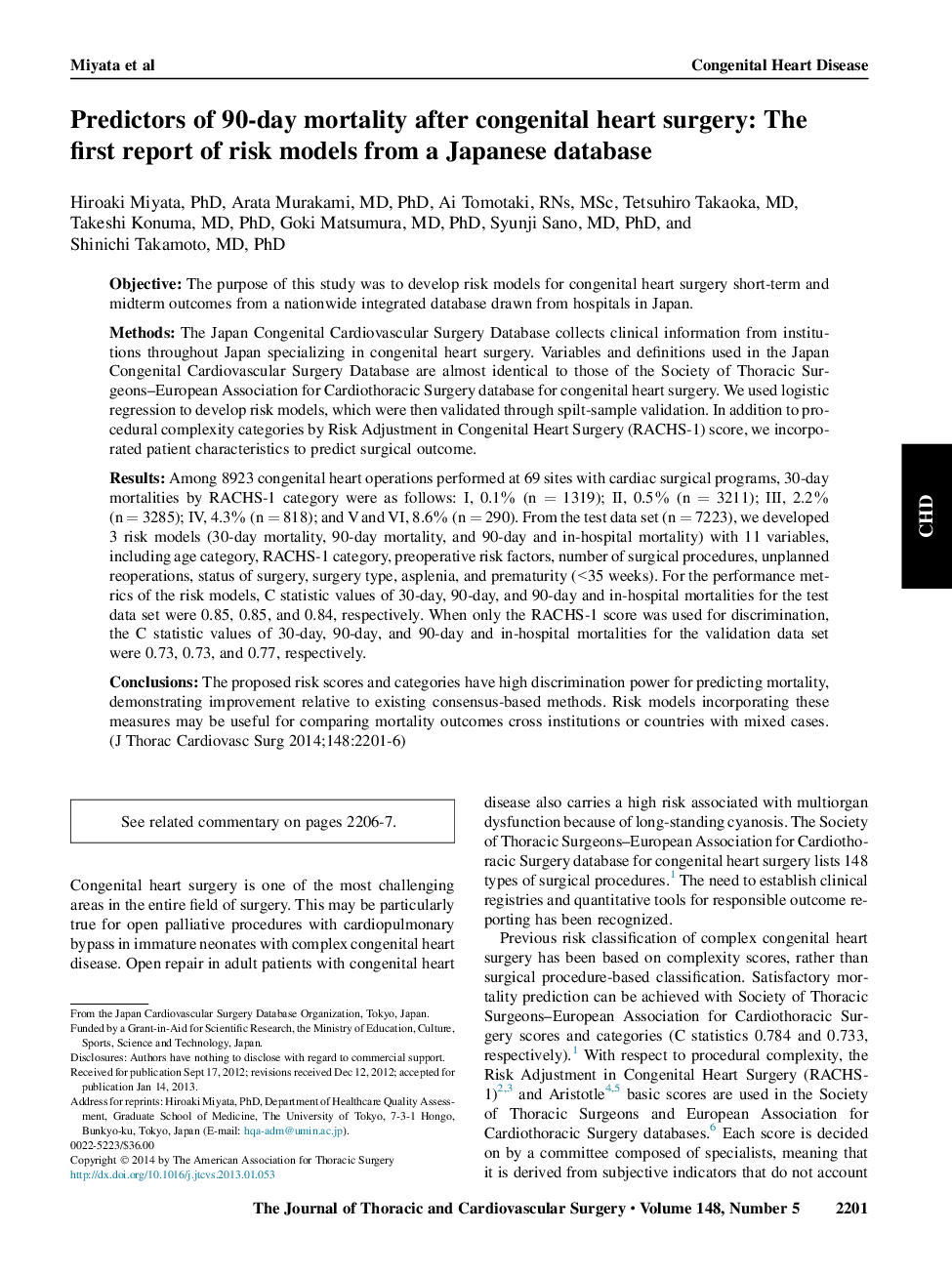| Article ID | Journal | Published Year | Pages | File Type |
|---|---|---|---|---|
| 5989595 | The Journal of Thoracic and Cardiovascular Surgery | 2014 | 6 Pages |
ObjectiveThe purpose of this study was to develop risk models for congenital heart surgery short-term and midterm outcomes from a nationwide integrated database drawn from hospitals in Japan.MethodsThe Japan Congenital Cardiovascular Surgery Database collects clinical information from institutions throughout Japan specializing in congenital heart surgery. Variables and definitions used in the Japan Congenital Cardiovascular Surgery Database are almost identical to those of the Society of Thoracic Surgeons-European Association for Cardiothoracic Surgery database for congenital heart surgery. We used logistic regression to develop risk models, which were then validated through spilt-sample validation. In addition to procedural complexity categories by Risk Adjustment in Congenital Heart Surgery (RACHS-1) score, we incorporated patient characteristics to predict surgical outcome.ResultsAmong 8923 congenital heart operations performed at 69 sites with cardiac surgical programs, 30-day mortalities by RACHS-1 category were as follows: I, 0.1% (n = 1319); II, 0.5% (n = 3211); III, 2.2% (n = 3285); IV, 4.3% (n = 818); and V and VI, 8.6% (n = 290). From the test data set (n = 7223), we developed 3 risk models (30-day mortality, 90-day mortality, and 90-day and in-hospital mortality) with 11 variables, including age category, RACHS-1 category, preoperative risk factors, number of surgical procedures, unplanned reoperations, status of surgery, surgery type, asplenia, and prematurity (<35 weeks). For the performance metrics of the risk models, C statistic values of 30-day, 90-day, and 90-day and in-hospital mortalities for the test data set were 0.85, 0.85, and 0.84, respectively. When only the RACHS-1 score was used for discrimination, the C statistic values of 30-day, 90-day, and 90-day and in-hospital mortalities for the validation data set were 0.73, 0.73, and 0.77, respectively.ConclusionsThe proposed risk scores and categories have high discrimination power for predicting mortality, demonstrating improvement relative to existing consensus-based methods. Risk models incorporating these measures may be useful for comparing mortality outcomes cross institutions or countries with mixed cases.
